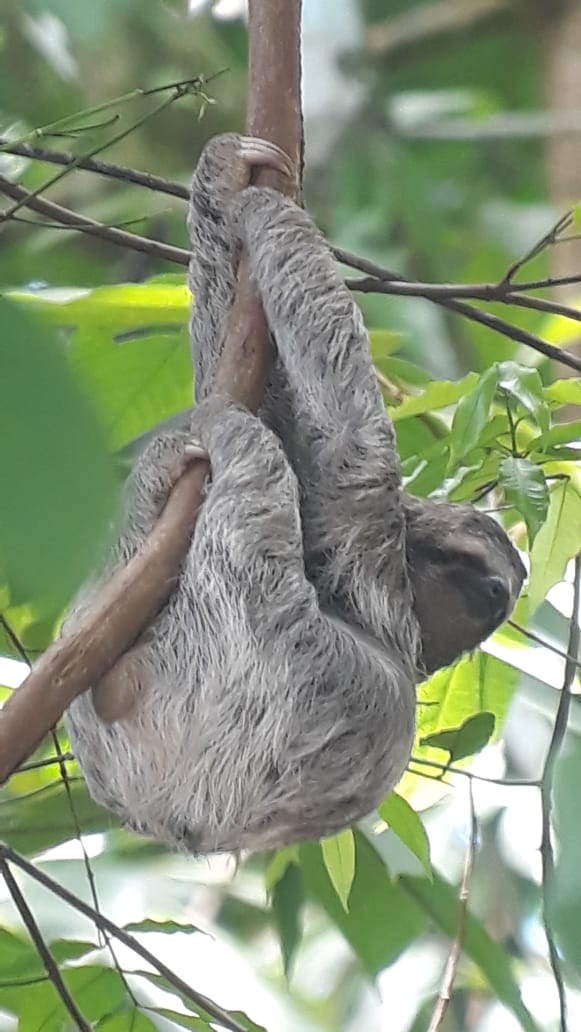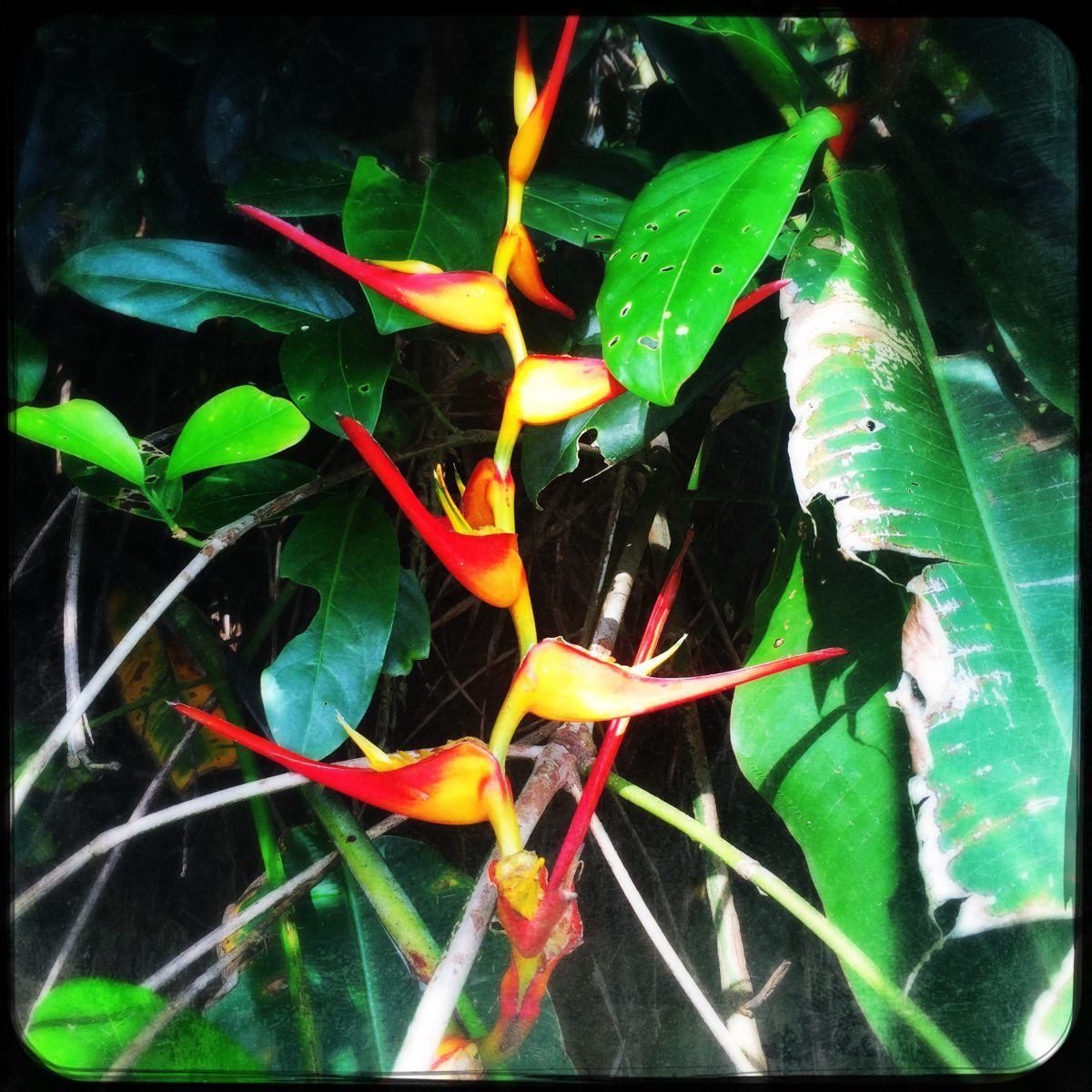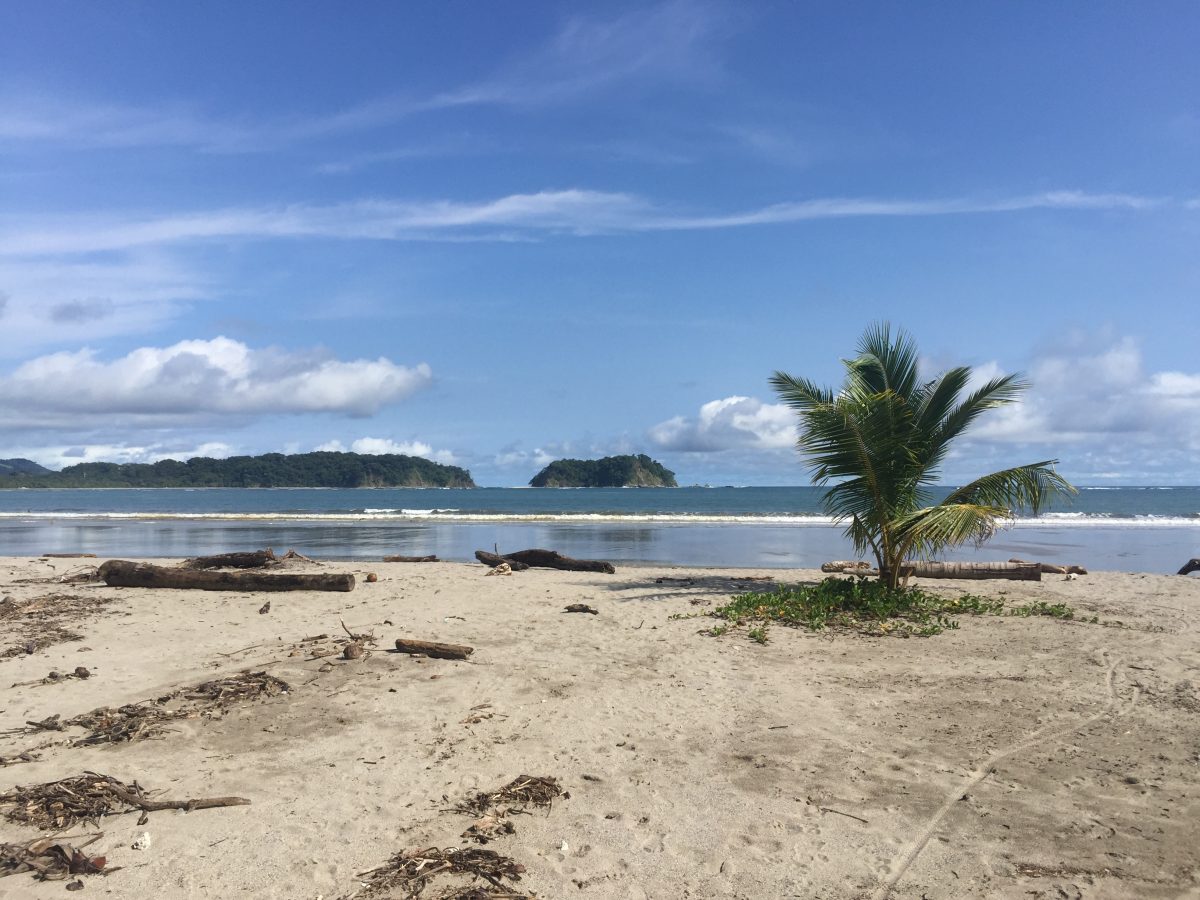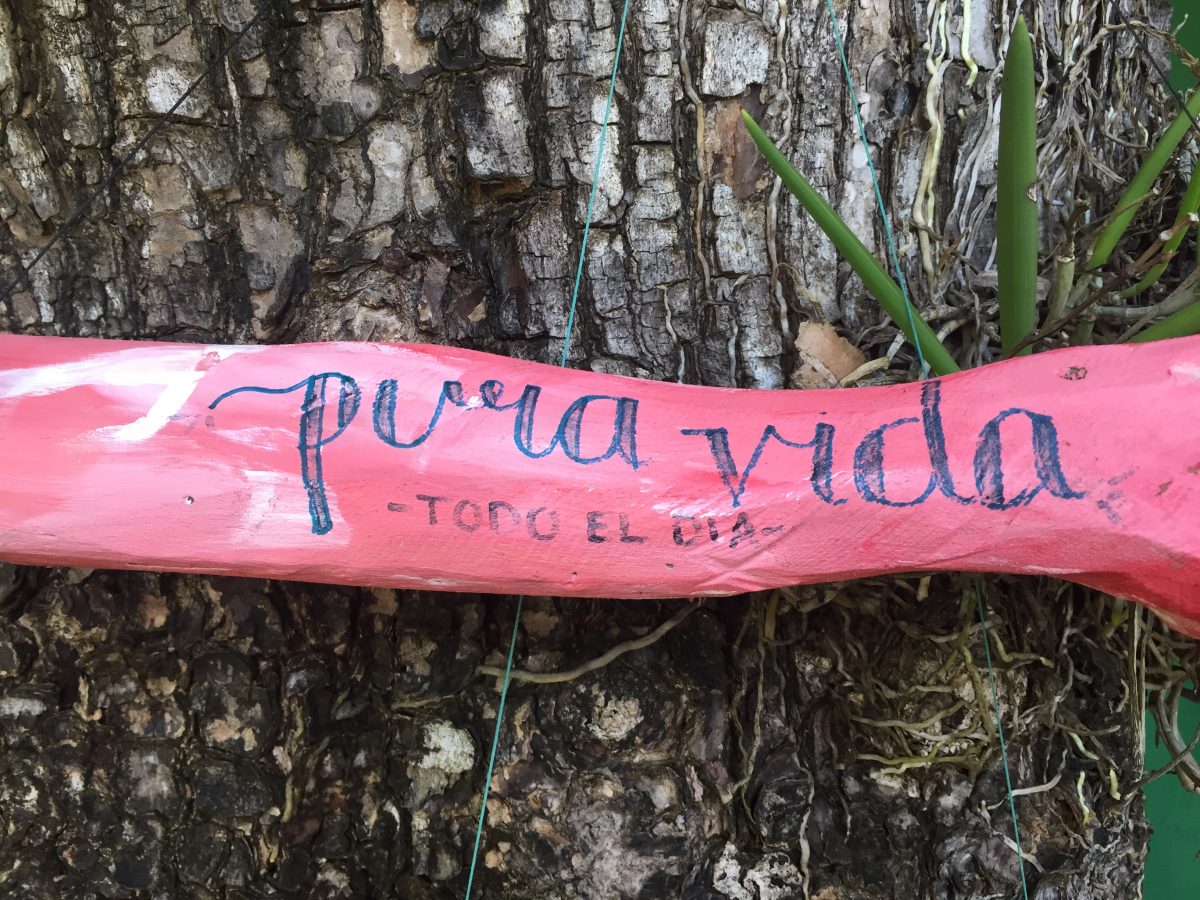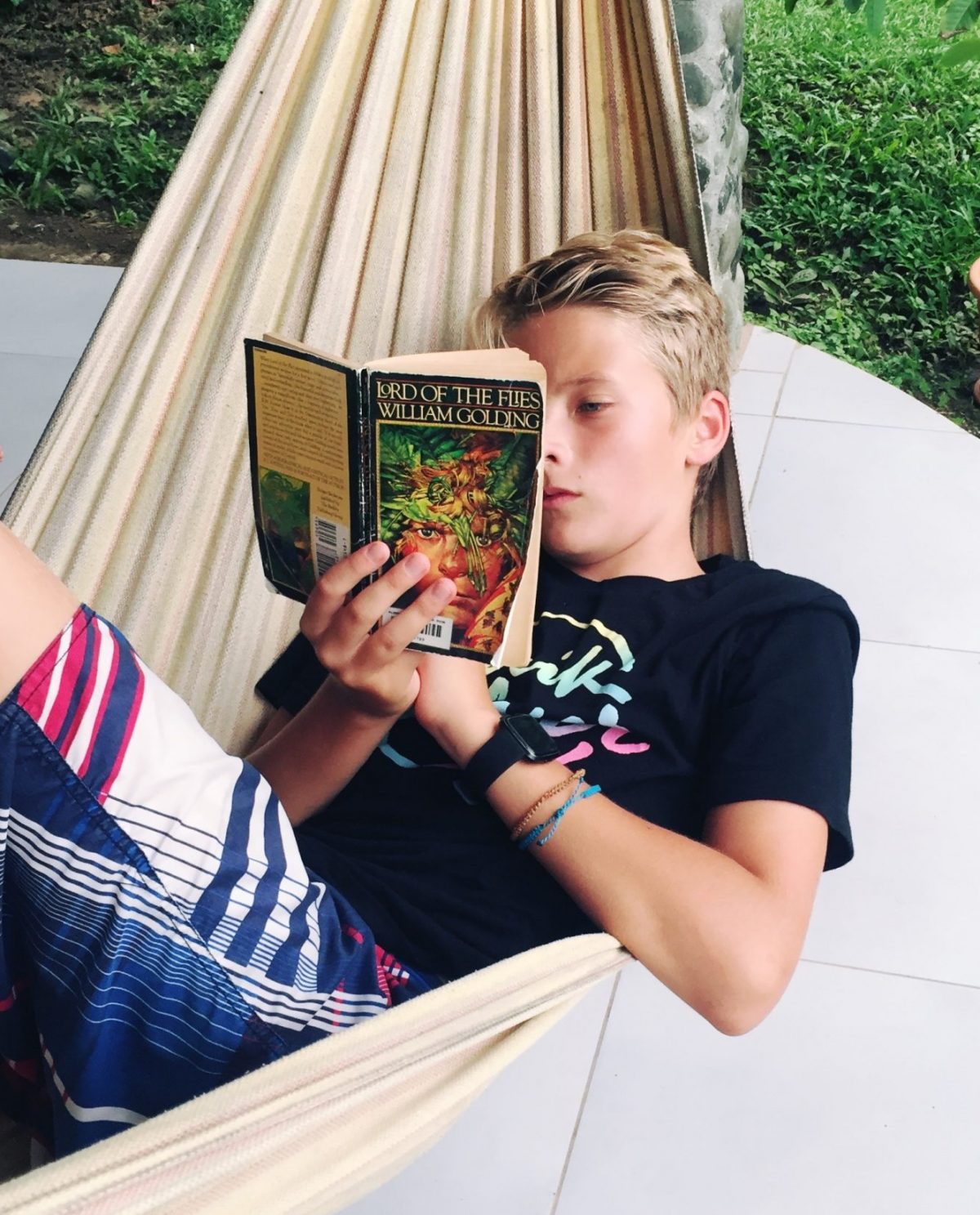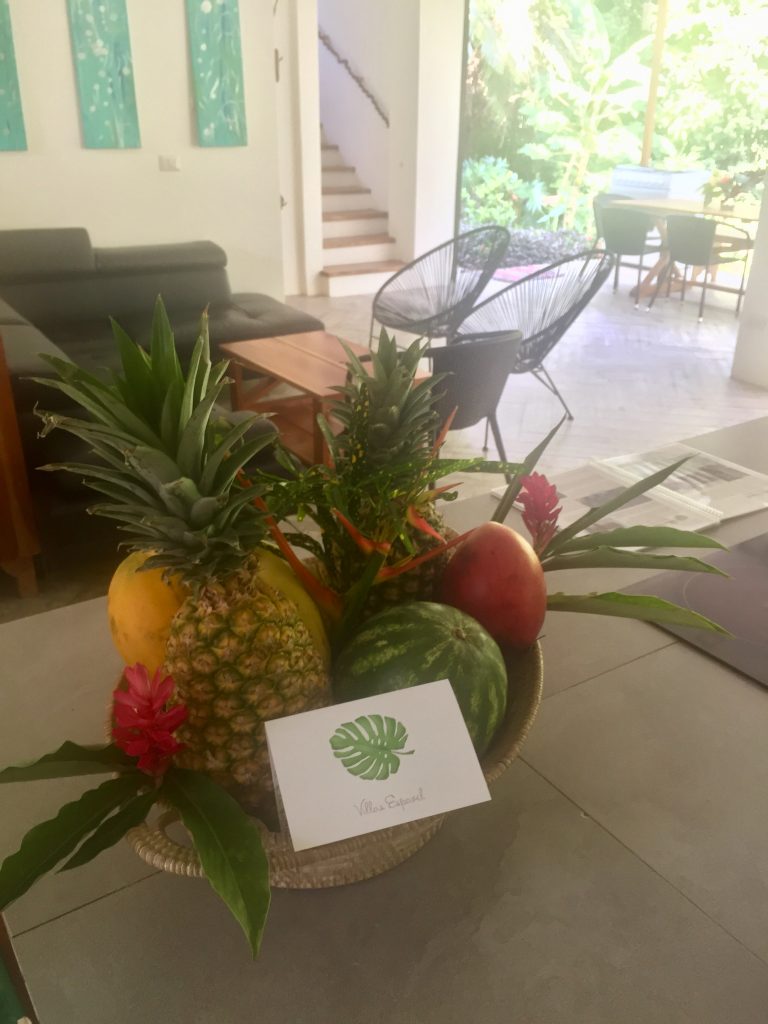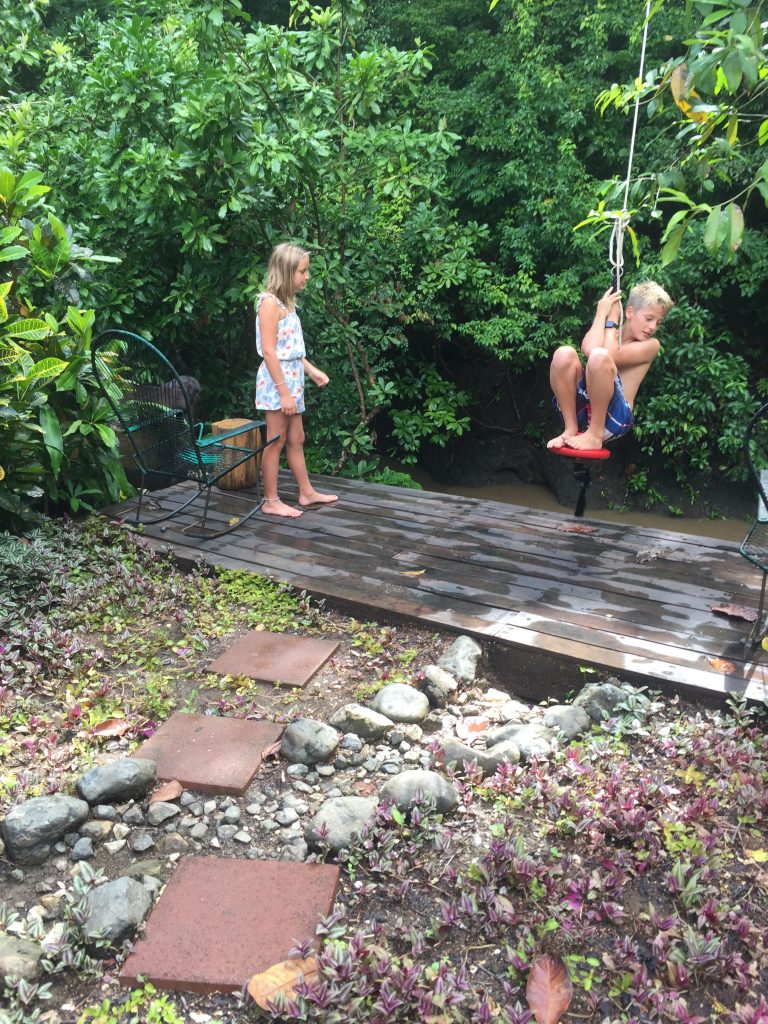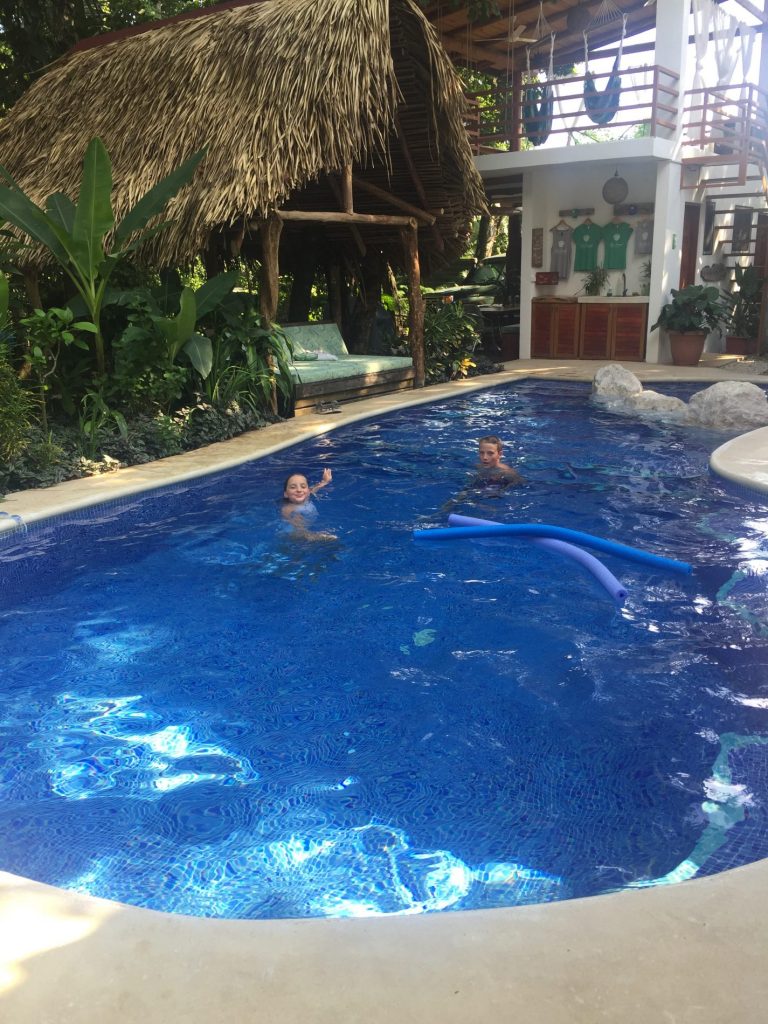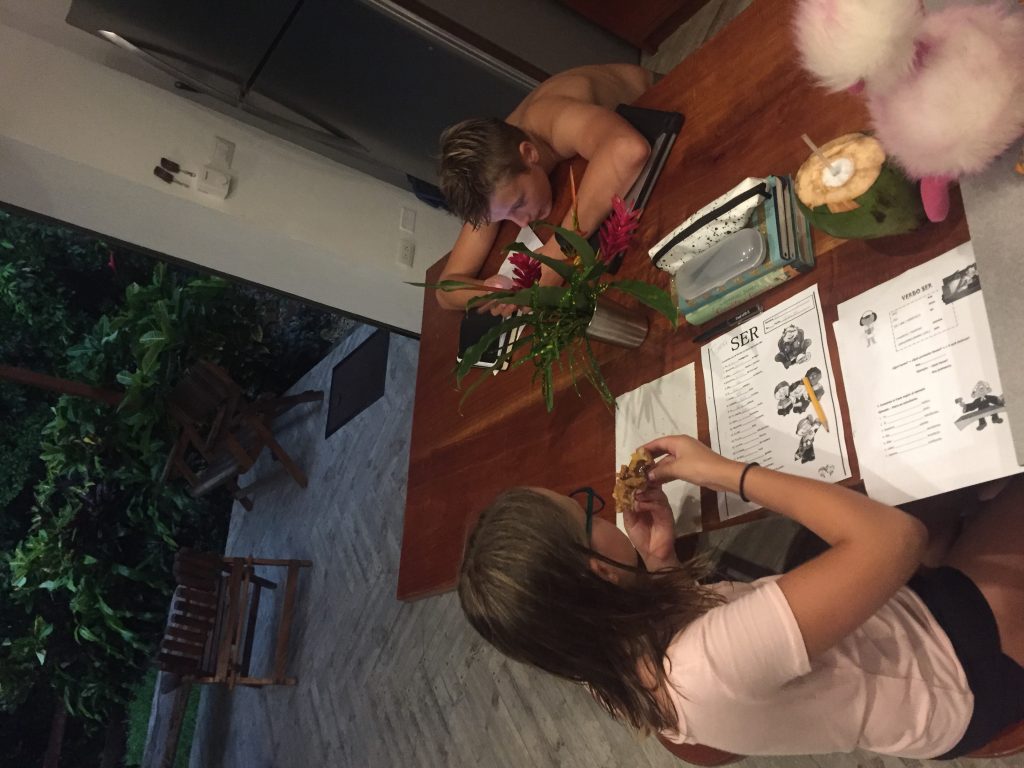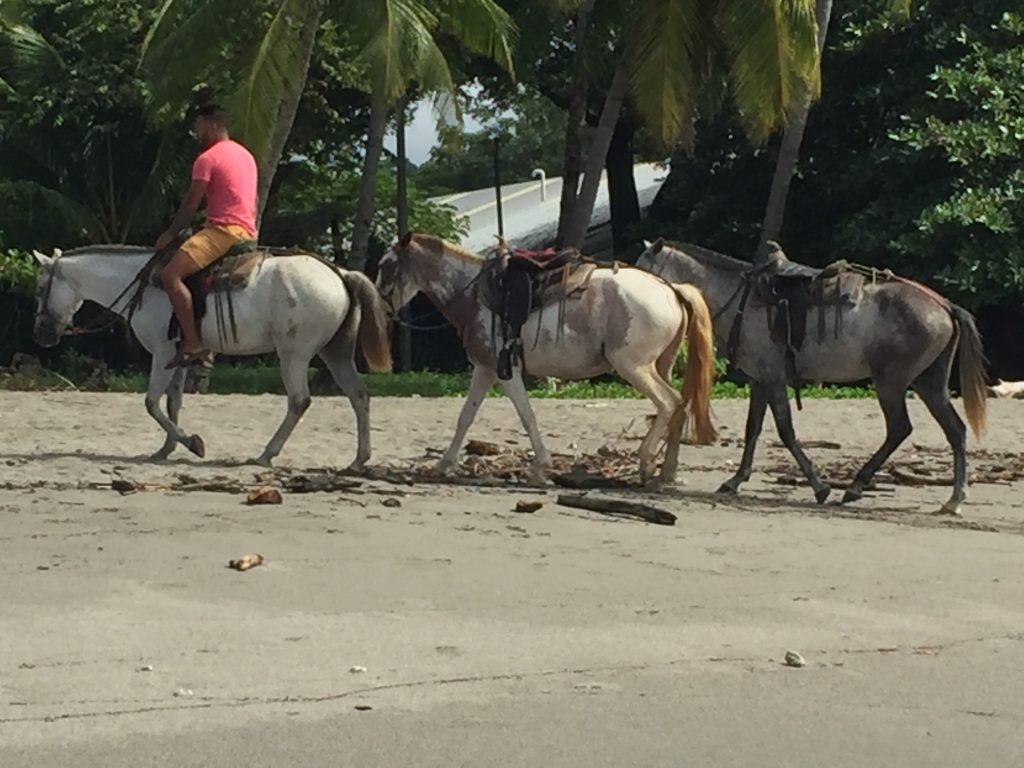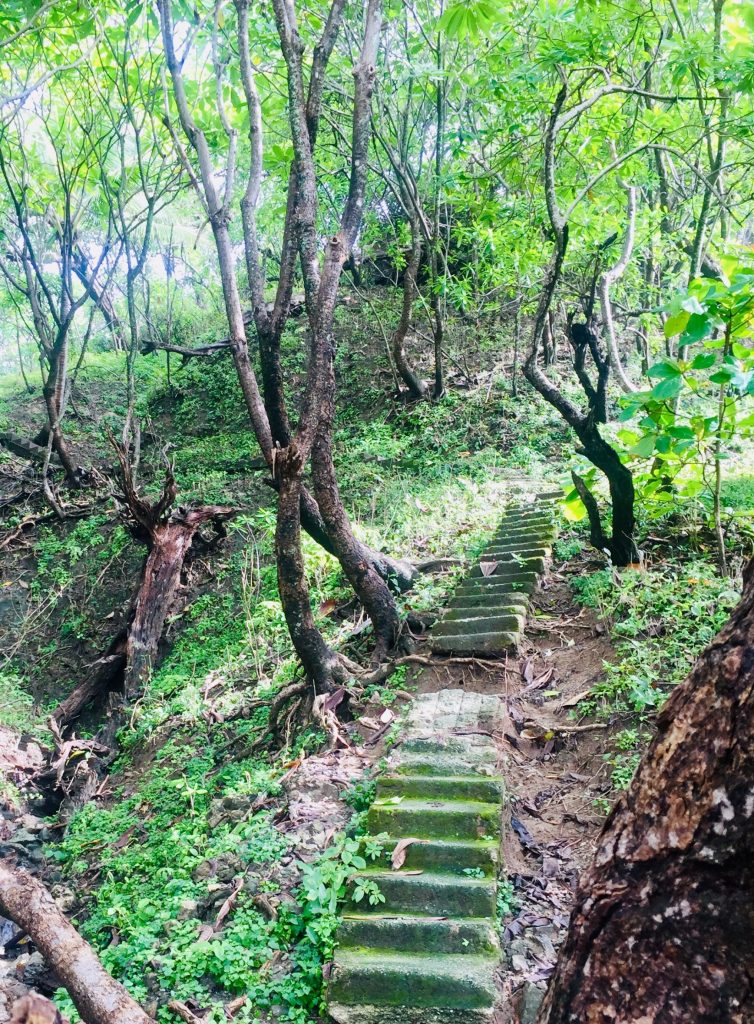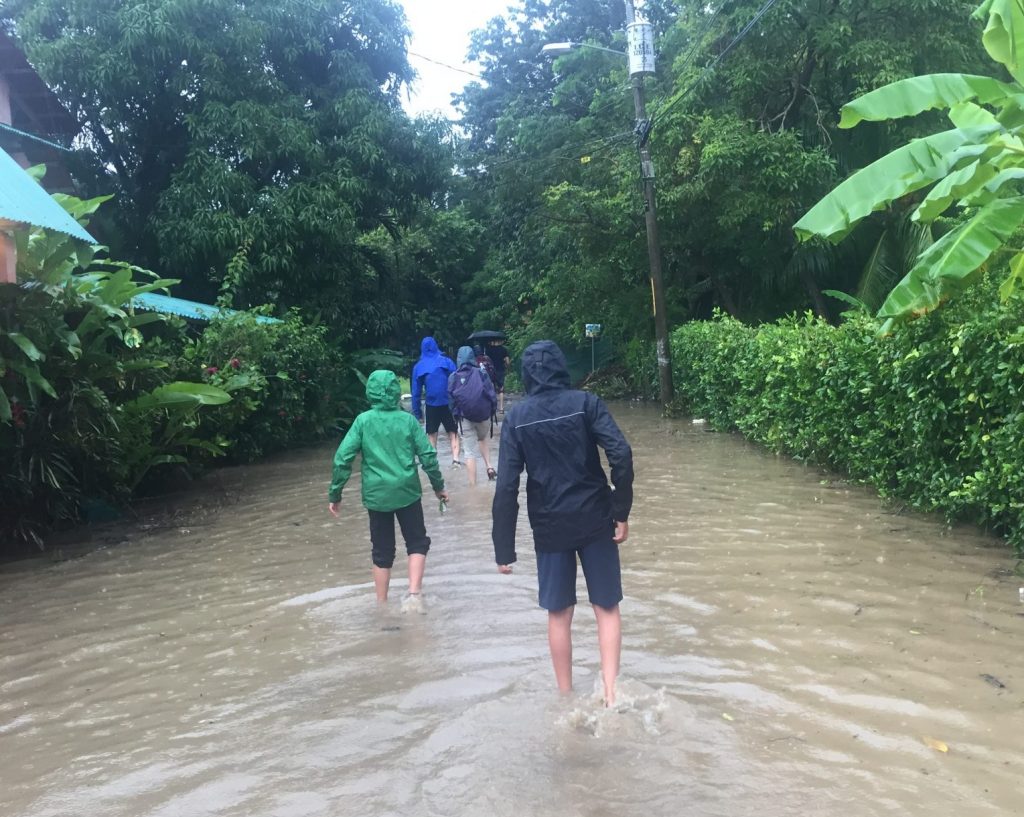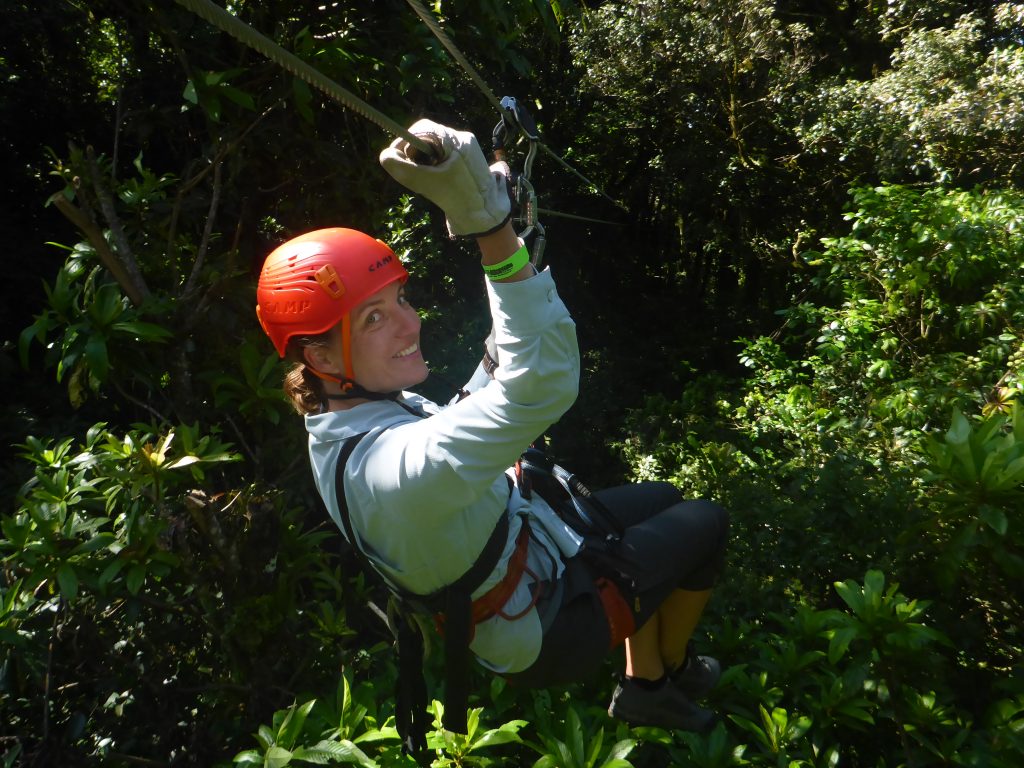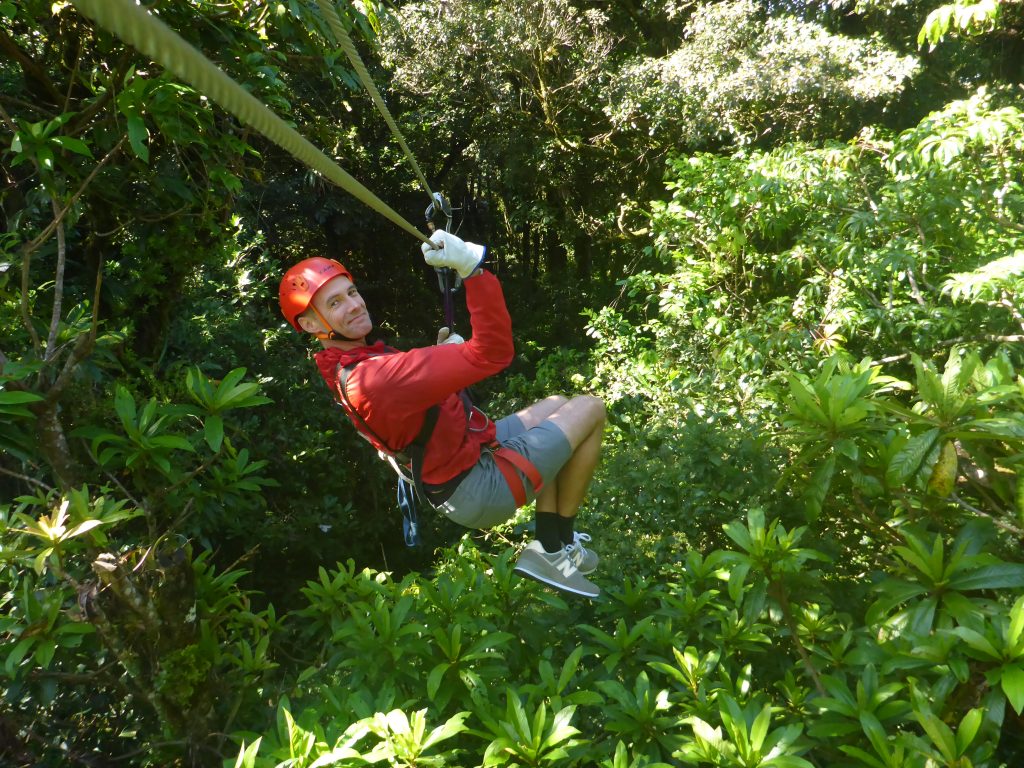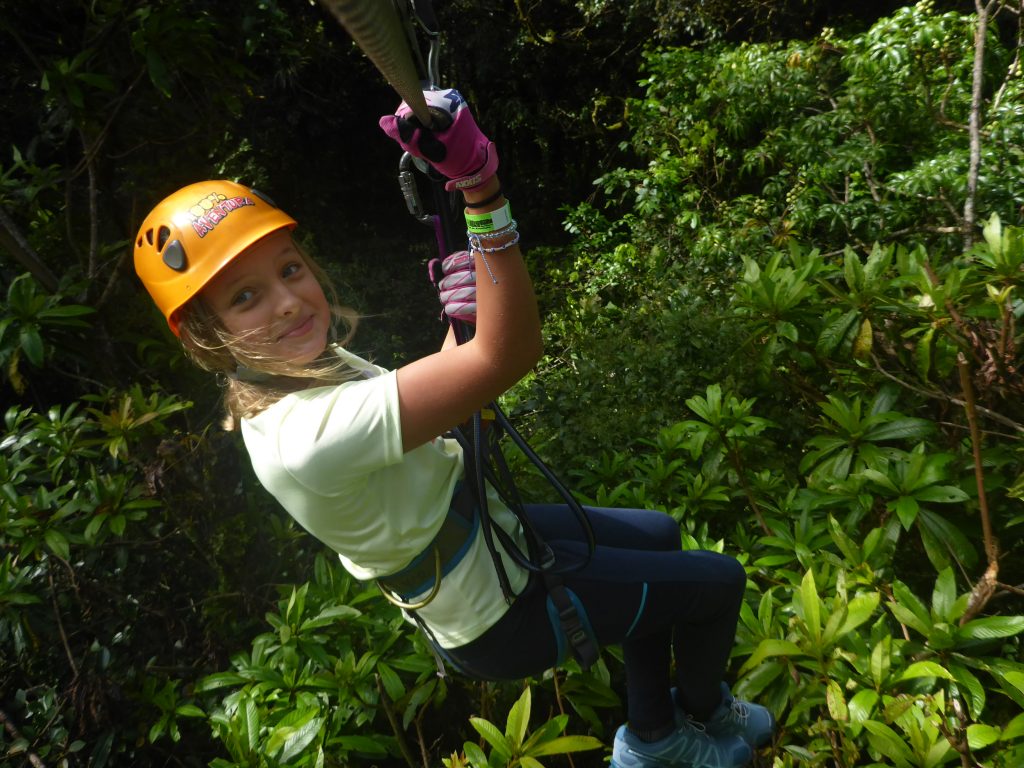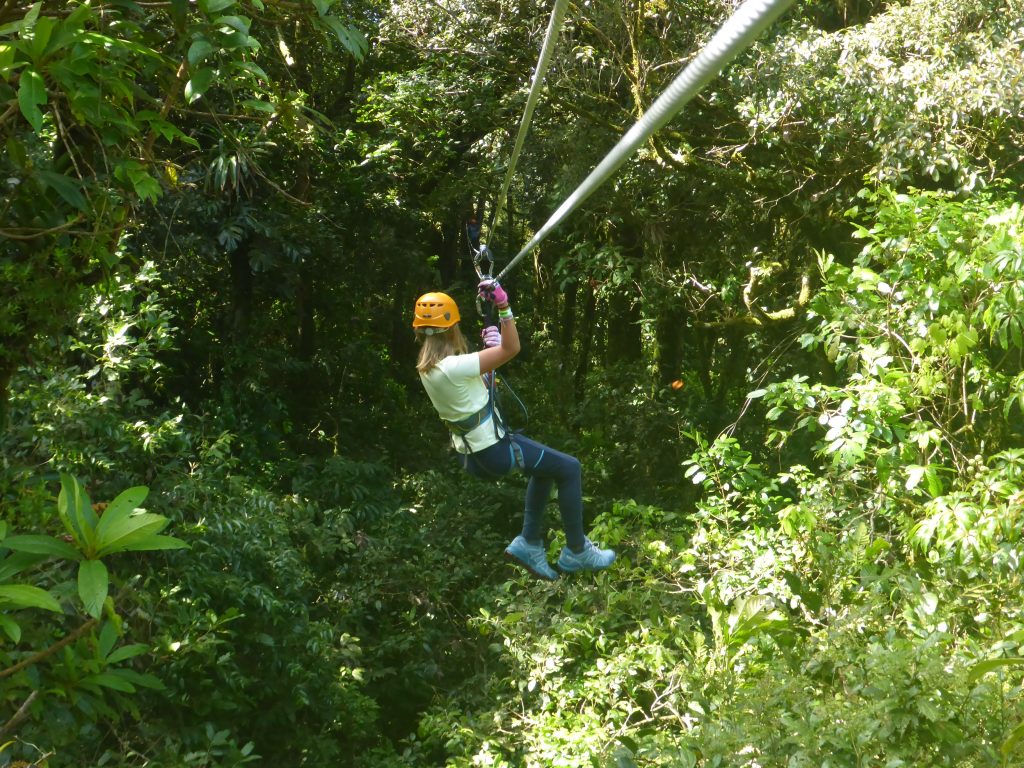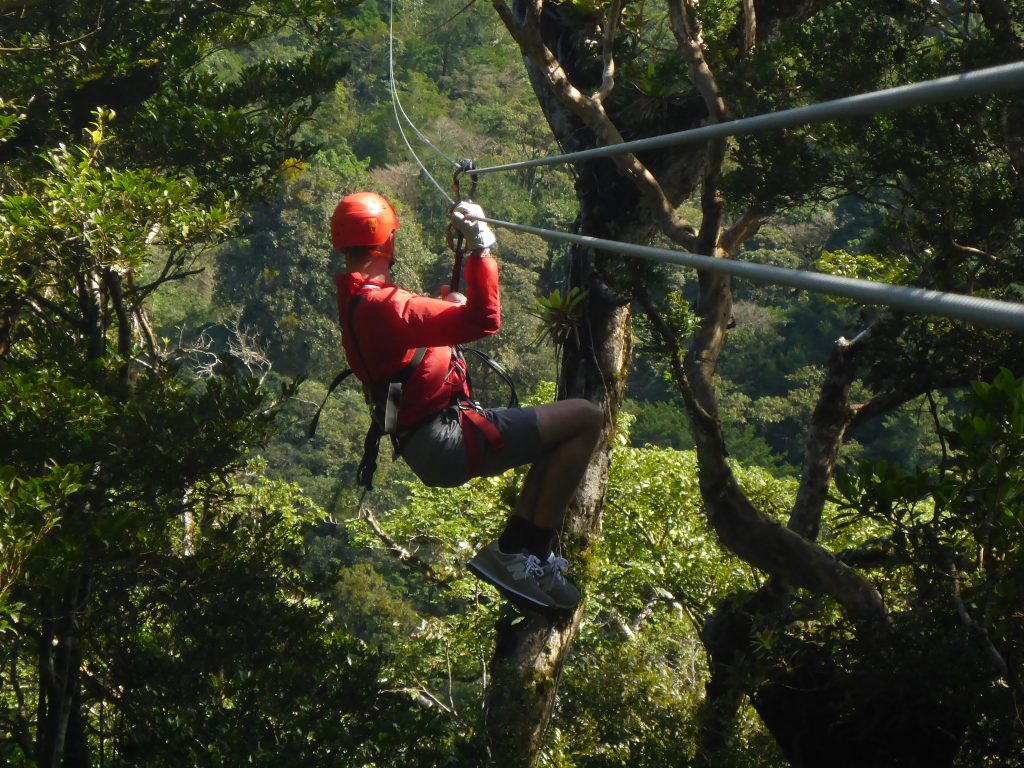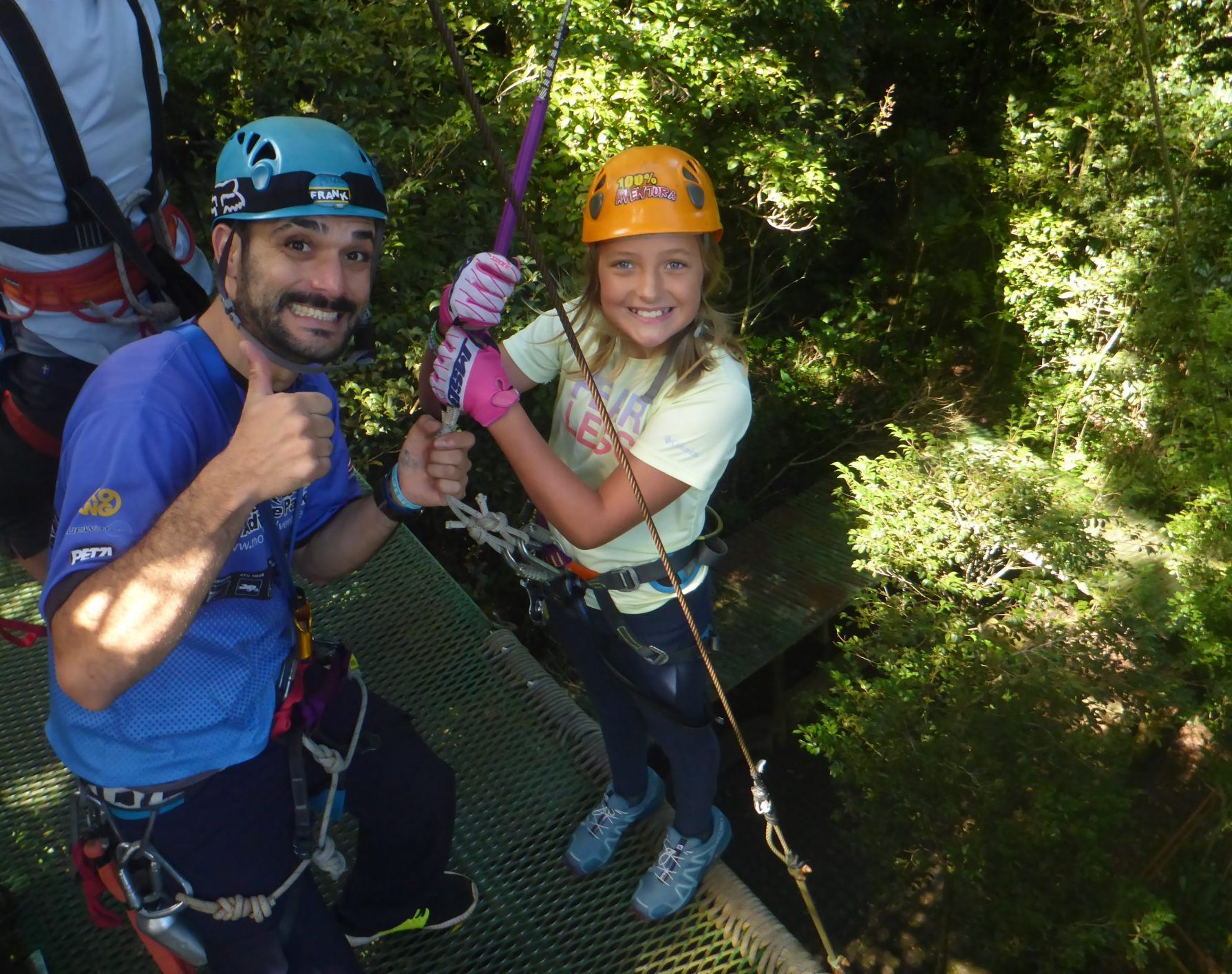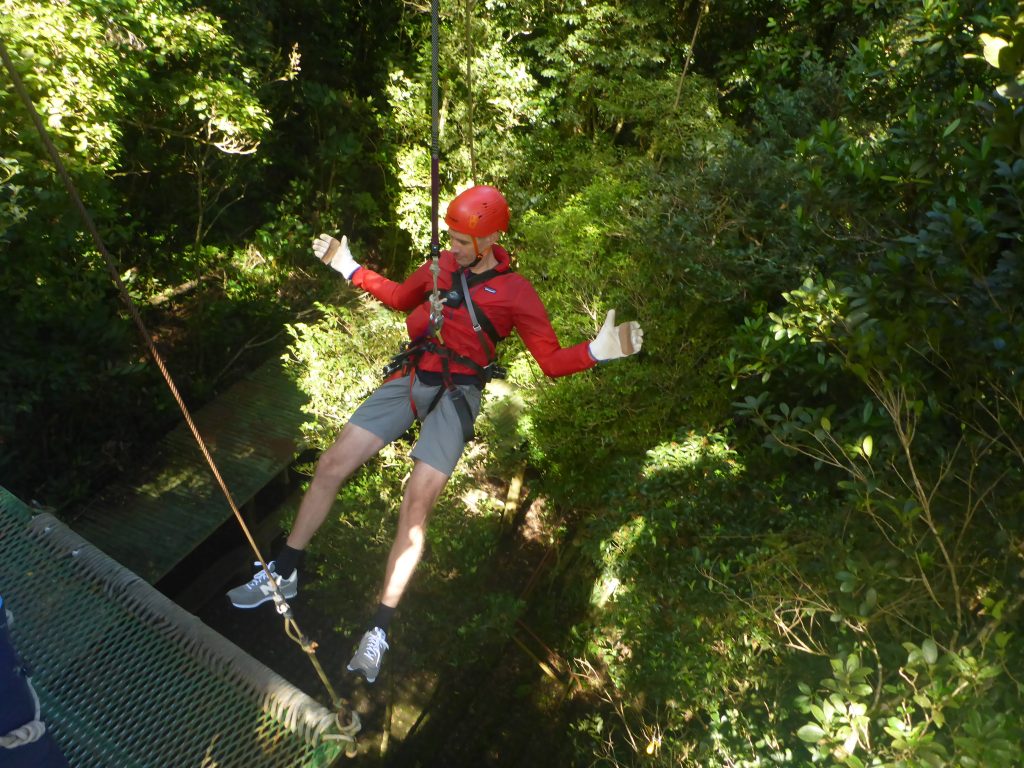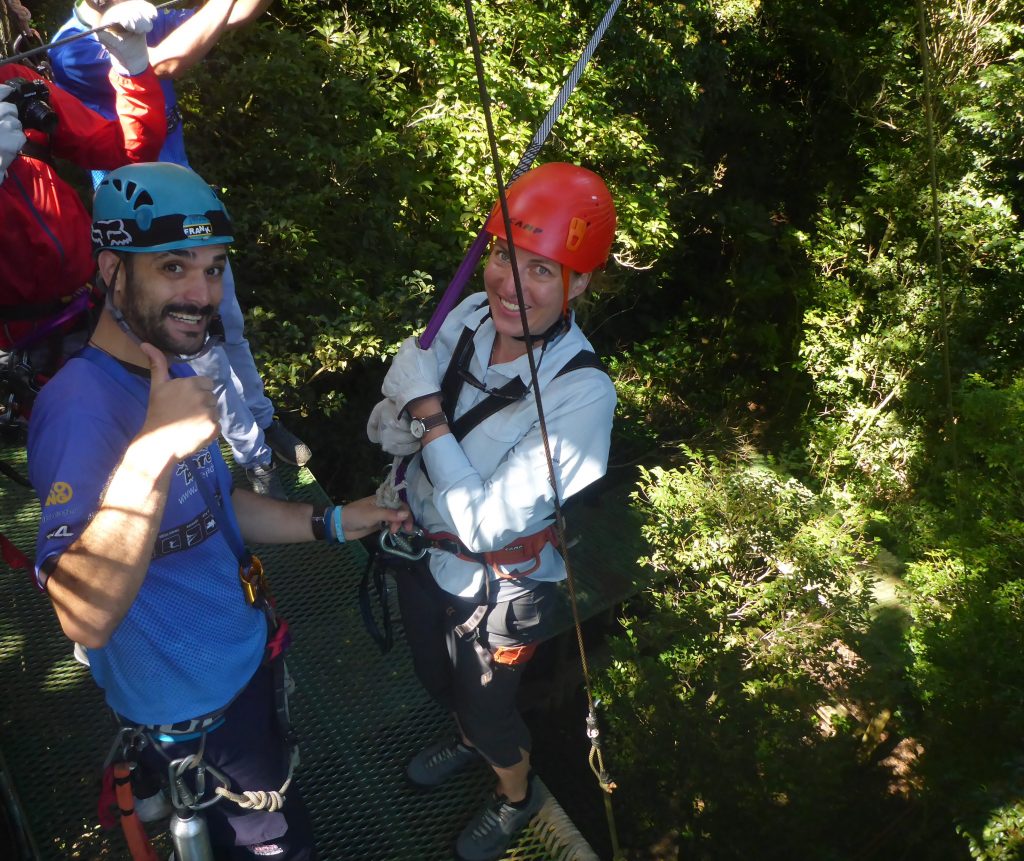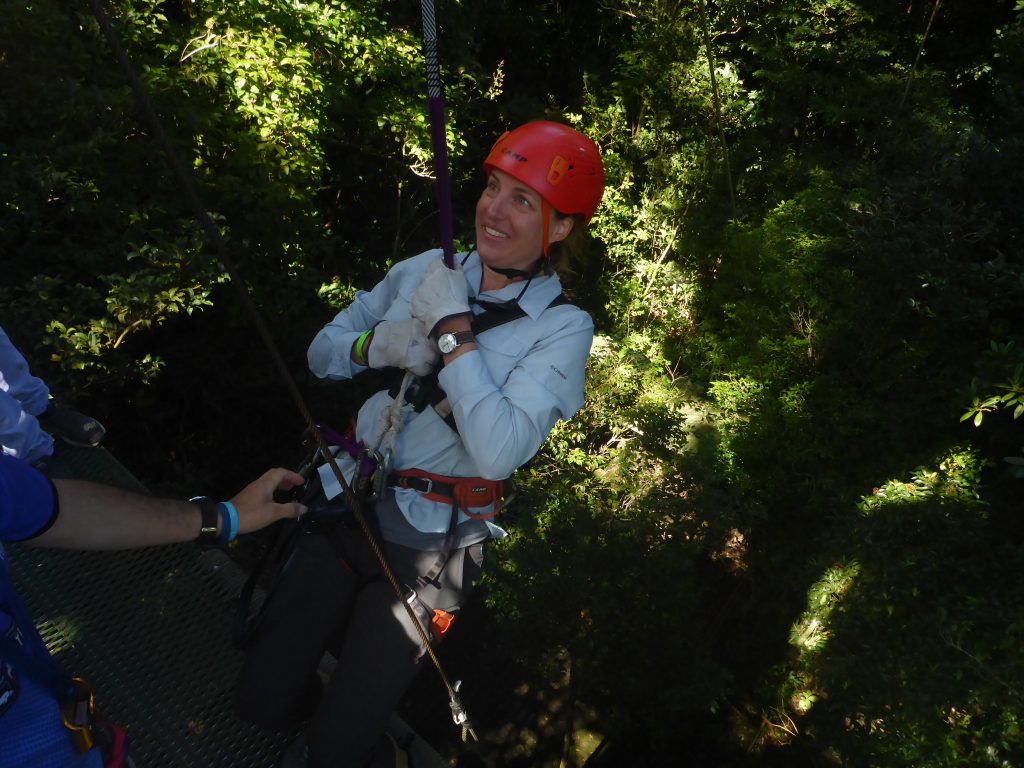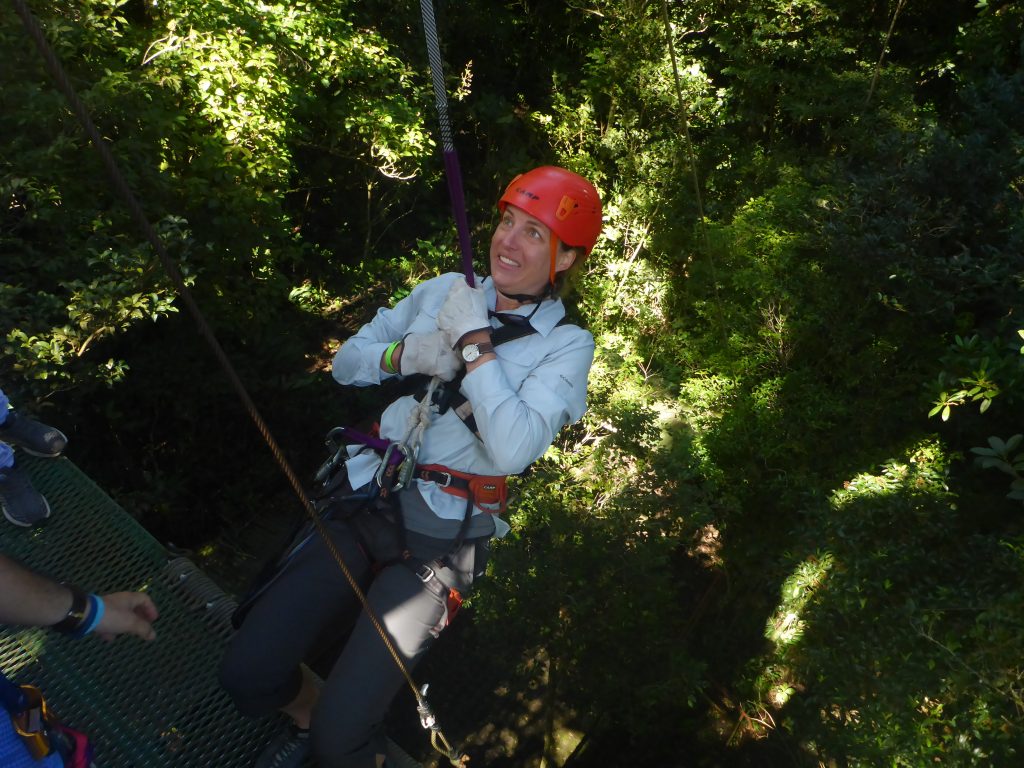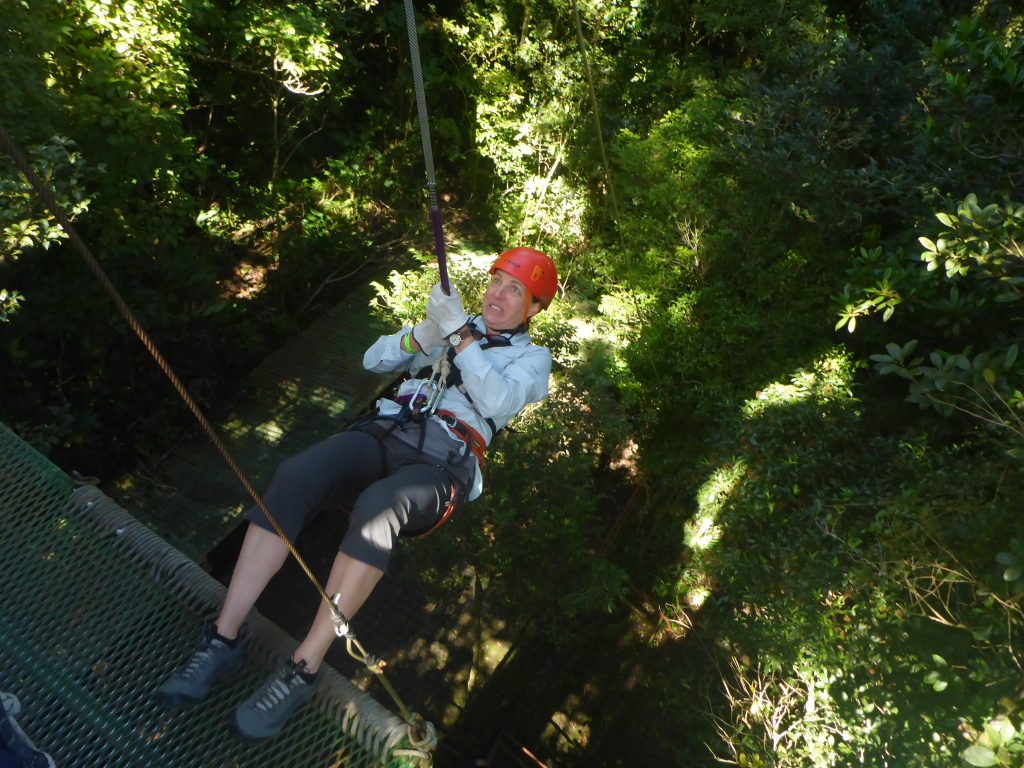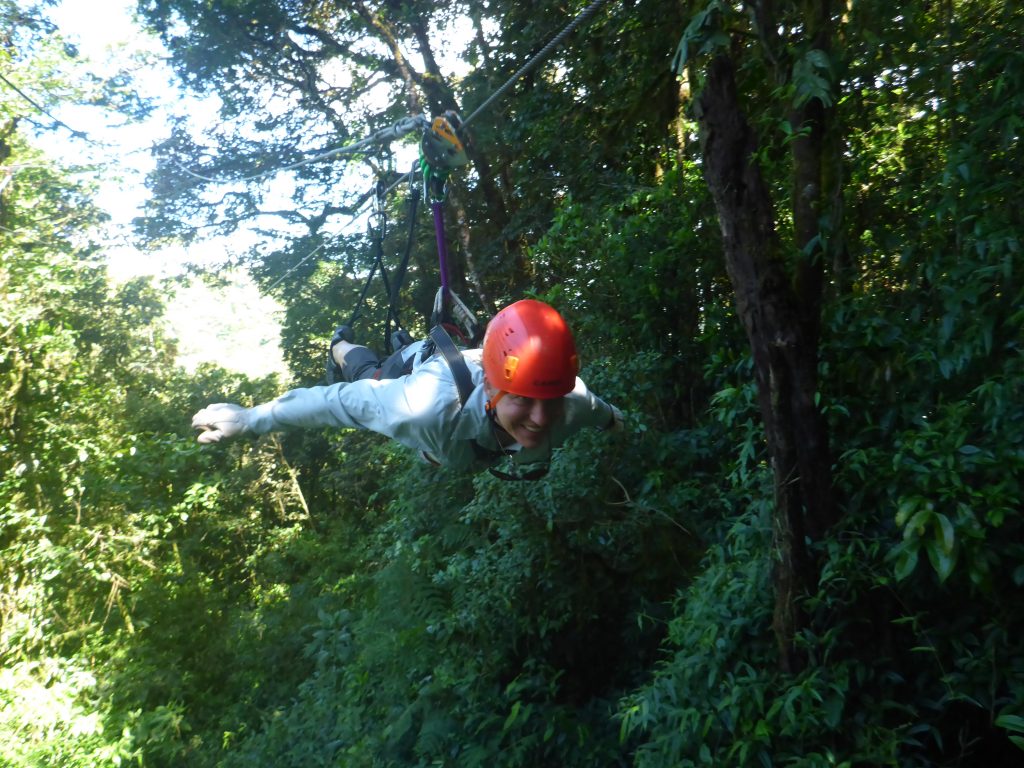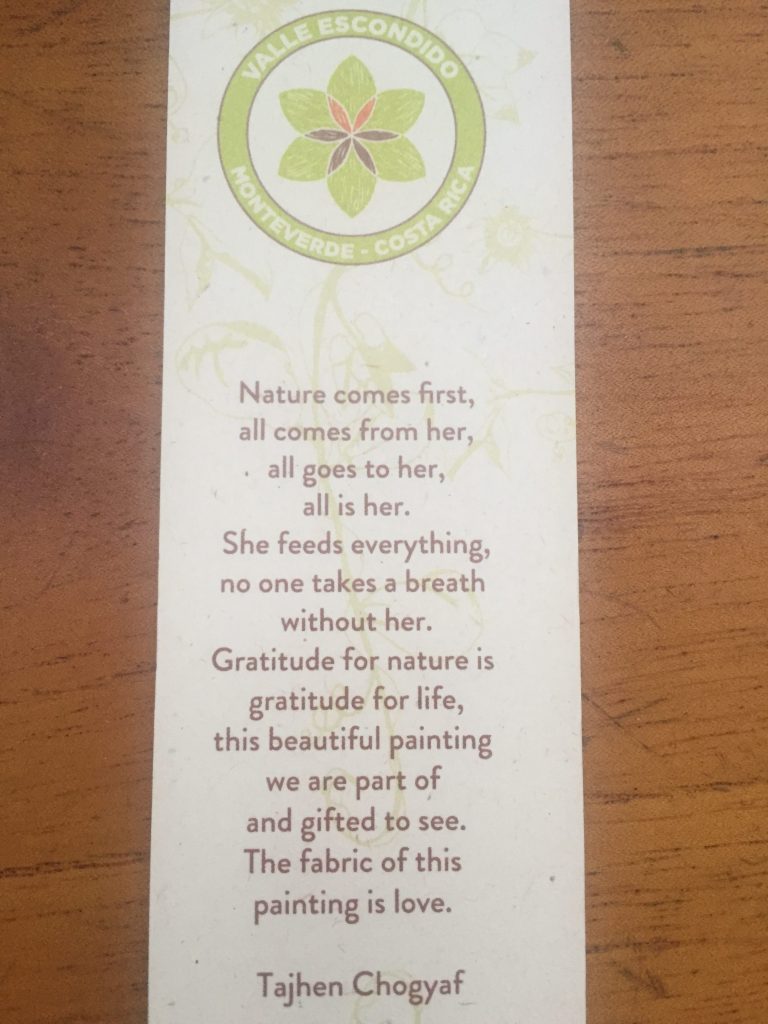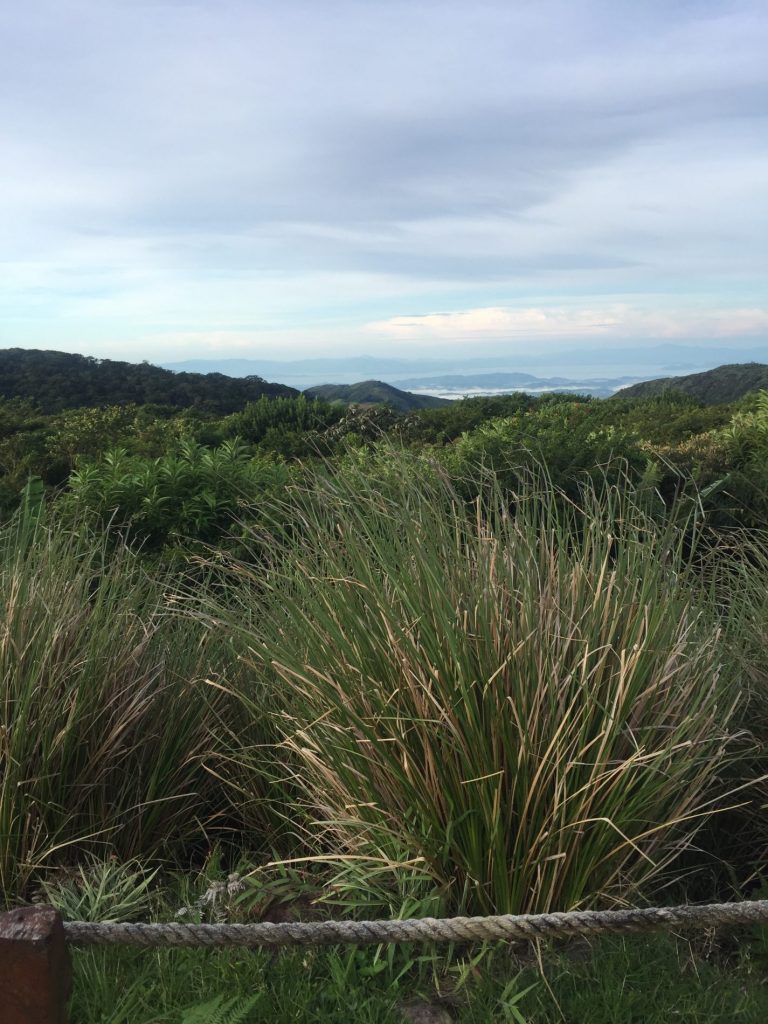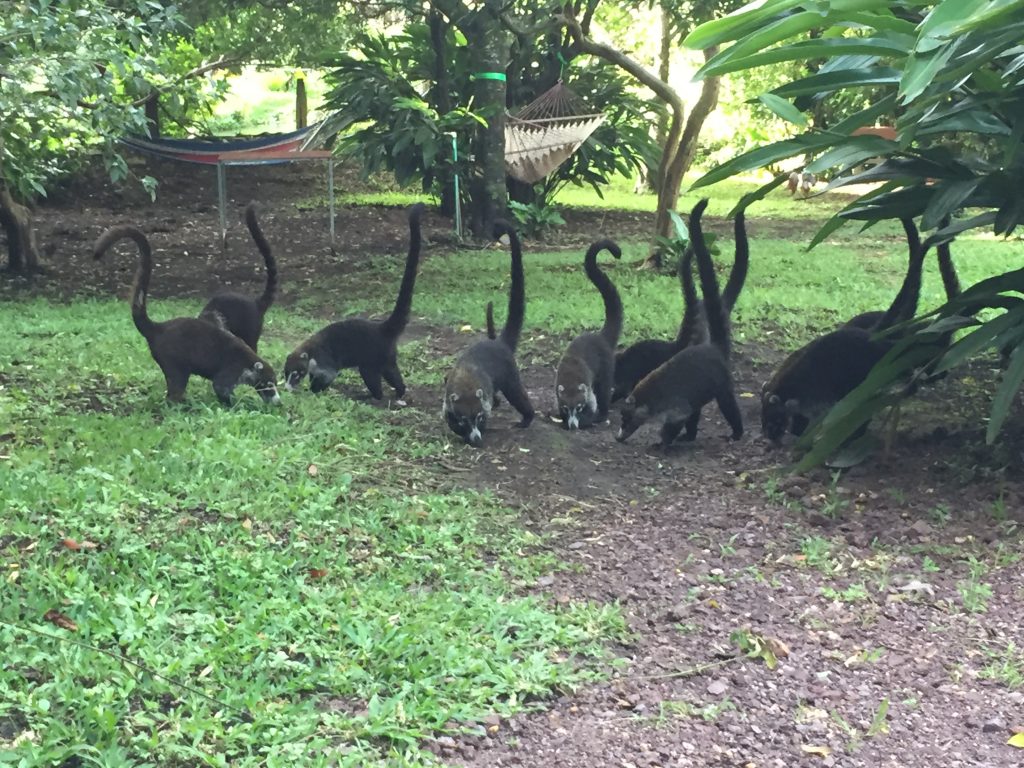Oct 25 2019
By Annelise
On our jungle walks these past few days I learned some interesting new things.
My new vocabulary words are
Prehensile: The term to describe when a tail is used to wrap around and grasp a limb for example. The Spider Monkey has a prehensile tail whereas the Squirrel monkey does not
Phenoplastic: When an organism can alter its gene expression depending on its environment. i.e. leaves at the bottom of a tree may have a very different shape that those near the top of the canopy.
We learned about the phenomenon of multi-species flocks of birds in which a mating pair from different species flock together to avoid territory of others of their type while maintaining the benefit of a group to alert from predators and spot prey/food. The manner one bird seeks food helps another; plucking fruit dislodges bugs, etc. Another opportune relationship is that of the double-toothed kite who follows troupes of squirrel monkeys through the forest and swoops up the snakes, and lizards that fall from the branches as the monkeys swing from limb to limb.
We learned about leaf cutter ants that seek out foliage with
compounds that support the growth of the fungus they eat for food that will
grow on the leaves once brought back to their colony. The trees however detect
that they are being fed on and they begin to produce compounds that will
inhibit the fungal growth. Ants detect this change and stop feeding on that
tree. Furthermore, that tree will signal through hormones in the root system to
nearby trees to begin producing the inhibiting compounds. Thus, the industrious
ants may walk for great lengths across the forest floor for leaves, creating
clear paths and tunnels to their colonies. These colonies are complex
structures with chimneys to ventilate and meet the humidity and temperature
requirements of the fungus. In another example the acacia tree has nectar pods
to attract a particular ant and wide hollow thorns for those ants to live in. These
ants will bite the lips of deer nibbling on the tree and hence they act as a deterrent.
They also create a urine that is so acidic it prevents the growth of plants
under the acacia canopy that would compete for nutrients.
We learned about the strangling fig tree, in Spanish – Matapalo (tree killer). This tree does not have seeds that start at the forest floor and then send a sapling to find light through the canopy. The Matapalo fig fruit is deposited near the top of another tree by a bird or monkey. The tree then sends vine roots down the trunk that, as they grow, strangle the tree that had supported them until they are thick enough to support the fig canopy on their own and continue to develop a thick lattice like truck while the dead tree rots away. Why more tree species do not use such an effective method to reach to sun is strange. It is certainly less energy than the strategy of the walking palm tree as it grows new roots to “walk” into the sunlight”
The list of wildlife we are seeing nearly doubles by the day. I could spend hours watching a troupe of squirrel monkeys (think Mr Nelson of Pippi Longstocking) feed and travers the forest. They are so busy and gregarious. I could easily fall in love with the occupation of naturalist guide; learning, teaching others while spending most my working hours walking in pristine surroundings. What I am left with these past couple days is renewed wonder at the complexity in the evolutionary process to create such intricate relationships and behaviors between organisms to support survival. These precious hard-won connections are tenacious yet fragile in their way; intolerant of ignorance or repurposing habitat.
A full but not exhaustive list of wildlife we met in Costa
Rica:
Birds: Crested Caracara, Turquoise-browed motmot, Cinnamon
hummingbird, Green breasted mango hummingbird, Inca dove, Great Kiskadee, White-thrated
magpie jay, Groove billed ani, White Ibis, Black Guan, Squirrel Cuckoo, Scarlet
Macaw, Green Hermit Hummingbird, Chesnut mandibled Toucan, Common Black hawk,
Great tinamou, Great curassow, Orange bellied manakin, Double toothed kite, Magnificent
frigate bird, Crested guan, Cherrie’s tanager
Mammals: Agouti, White-nosed coati, Variegated Squirell,
Howler Monkey, White-faced capuchin monkey, Squirrel Monkey, Spider Monkey, Collared
Peccary, Three-toed Sloth, Long-nose bat, Tamandia or collared anteater, Red
Brocket Deer, Humpback whale, Pan tropical spotted dolphin
Reptiles: Green iguana, Black Ctenosour, House Gecko, Slender
Anole, Central American whiptail lizard, Spectacled caiman, American Crocodile,
Fer-de-lance snake
Amphibians; Cane toad, Marine toad, Smokey jungle frog
Butterfly: Blue Morpho and Small postman
Innumerable others too when I did not have my field guides with me.

